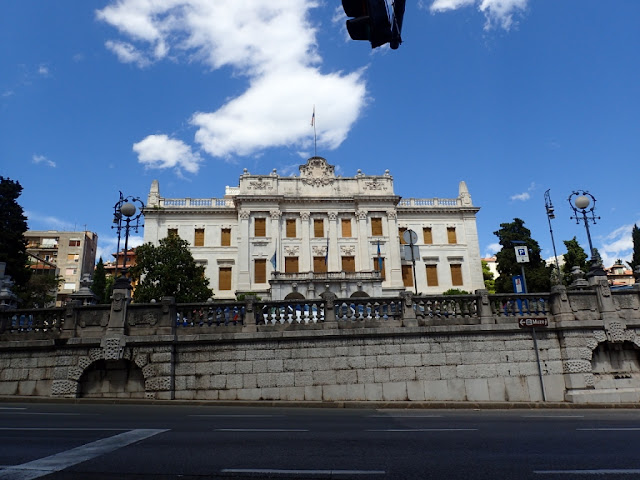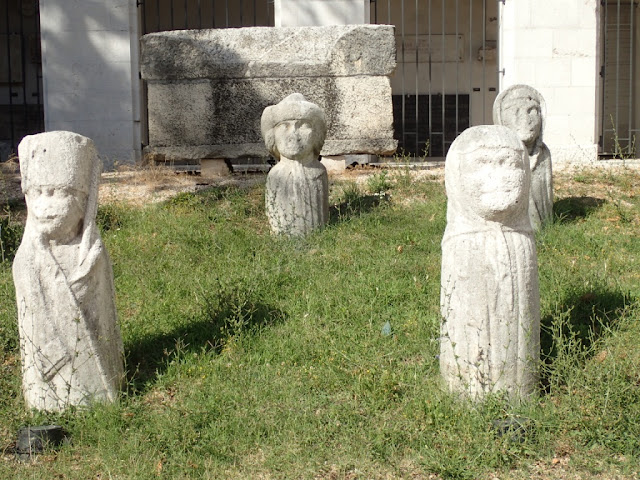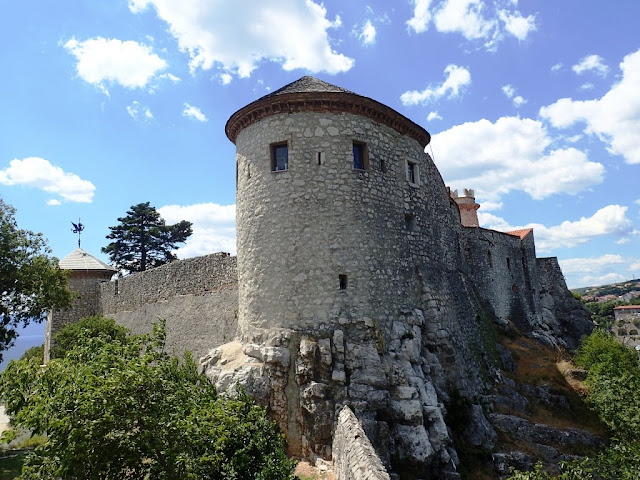We decided to break up our next bus journey with an
overnight stay in Split, Croatia. As we were
in Split for such a short time we only managed an afternoon walk around the
town. It has a pretty waterfront and a
quaint old town. Prices in Croatia are
quite a bit higher than in Bosnia and Albania so after a late lunch at a
restaurant, we were glad we had a little apartment and could cook the rest of
our meals ourselves.
 |
| Split waterfront |
 |
| Old Town Split |
 |
| An old penny-farthing |
 |
| Funky fountain |
In my first overseas trip as a naïve 24 year old, I had come
to this part of the world and stayed at a small resort in Sveti Stefan.
One of our bus routes passed by this town and
I got a chance to see it again from the cliff top.
I must admit my memory has faded over the
last 40 years.
I realised that all this
time I had been confusing Dubrovnik with Sveti Stefan.
I suppose writing a blog this time around
will help with those memory faults.
(Not
that I will be around 40 years from now, nor were there blogs in 1978!)
 |
| Sveti Stefan - I which I had been remembering as Dubrovnik |
The next day we hopped on a bus to Zadar. We were told that the trip would be only
about 2 hours but we got the milk run and stopped at every little town on the
coast. Four hours later and no rest
stops we arrived in Zadar. The coast is
very beautiful and a sailing paradise.
Terrific anchorages and islands dot the coast.


Zadar was a very pleasant surprise. I had never even heard of Zadar before we
started planning this trip about a month ago, yet it has a rich history and so
much to offer. Zadar is the oldest
continuously inhabited city in Croatia with evidence of a stone aged
settlement. In more recent times it was
ruled by the Venetians for several hundred years and there is definitely an
Italian flavour to the city, especially in its architecture and food.
There was one specifically Croatian
dish that I was keen to try – Black Risotto.
A friend of ours, who had been sailing this area, raved about it so I
made sure to try it. It was
delicious. The squid melted in ones
mouth and the taste was superb.
 |
| Delicious Black Risotto |
 |
| One of the beautiful gates into the Old Town |
 |
| Looking down on St Donat's 9th Century Church from the bell tower |
We stayed at a lovely guest house, The Secret Garden, in the
middle of the old town. It was nestled
into a community courtyard and had a delightfully funky outdoor sitting area.
 |
| The Secret Garden |
 |
| Whimsical rock collection |
Zadar is a very musical city.
One evening we came across a group of men in
striped shirts singing around the old town.
Their voices were quite beautiful so I
recorded their singing on my phone.
I
wanted to send to my father-in-law who sings in a chorus in Sydney.
As the audio file was too big for an email, I
tried my had and making
my first
video adding a slide show with some of the photos I took that day to go
with their melodious voices. I posted it on YouTube entitled Sights and Sounds of Zadar.
 |
| The choir group |
The next night was the start of Zadar’s summer concert
session. An open air concert was given
outside the medieval church of St Donats, dating from the 9th Century.
It was a great community event in lovely setting with superb orchestral
and operatic music.
 |
| Orchestra playing outside St Donat's Church |
In the little peninsula of the Old Town there are at least
10 churches.
Their ringing of the bells
at midday is quite impressive.
I made
another
YouTube video of the bells and
church towers.
 |
| Ancient Roman ruins next to a medieval church |
 |
| Romanesque Church built in 1175 |
 |
| Bell Tower |
Between the ancient history, music, architecture, excellent
restaurants and stunning setting, Zadar is a top spot to visit.





















































